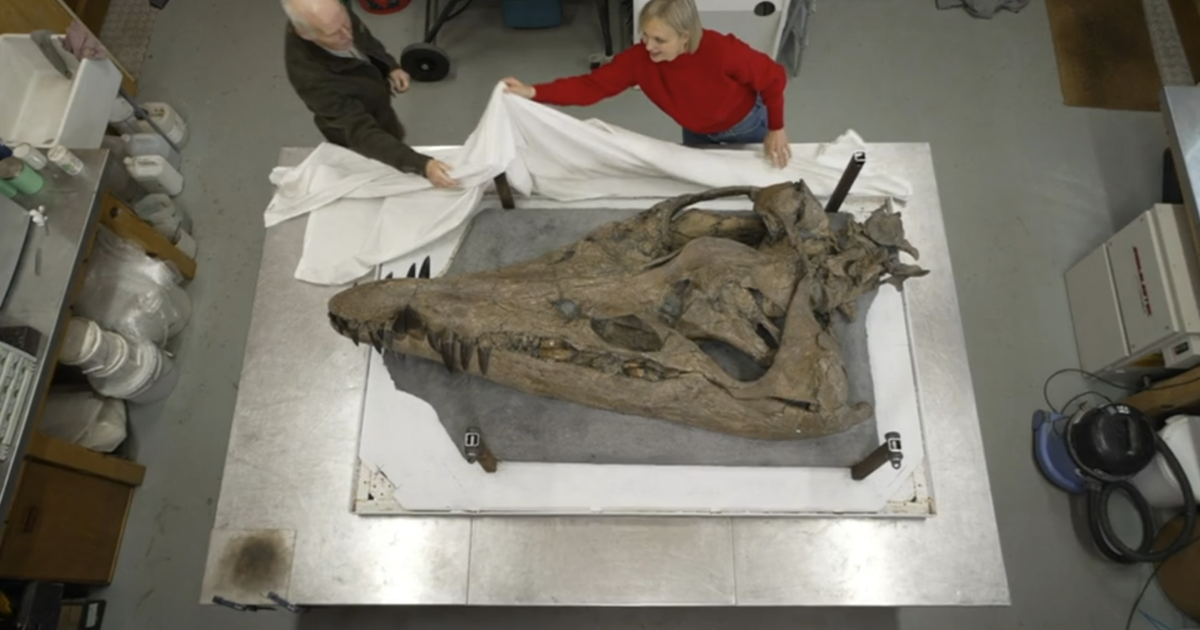London — The skull of an enormous ancient sea monster called a pliosaur has been pulled from cliffs on the U.K.’s southern Jurassic Coast. The pliosaur was a marine reptile that lived around 150 million years ago and was around 10 to 12 yards long.
The fossilized skull still has 130 razor sharp, ridged teeth, which pliosaurs used to pierce a prey animal’s flesh repeatedly during an attack.
“The animal would have been so massive that I think it would have been able to prey effectively on anything that was unfortunate enough to be in its space,” Dr. Andre Rowe from Bristol University told CBS News’ partner network BBC News. “I have no doubt that this was sort of like an underwater T. rex.”
BBC News
Its prey would have included other reptiles, as well as other passing pliosaurs.
The fossil was discovered by local fossil enthusiast Steve Etches, who was walking near the cliffs and found the tip of the snout. Curious as to where the rest of the fossil was, he used a drone to guess that it was in the side of a cliff, and he managed to extract the rest of it by abseiling down from the top.
Scientists say the fossil is one of the most complete pliosours ever found and will help contribute fresh information about how the animals lived.
Paleobiologist Emily Rayfrield told the BBC that she was already able to determine the animal had extremely strong jaw muscles – about twice as strong as those of saltwater crocodiles, which have the most powerful jaws of any living animal.
“Crocodiles clamp their jaw shut around something and then twist, to maybe twist a limb off their prey. This is characteristic of animals that have expanded heads at the back, and we see this in the pliosaur,” she said.
Etches said he would put the head on display at a local museum, and he thinks the rest of the pliosaur’s body is still inside the cliff.
“I stake my life the rest of the animal is there,” Etches told the BBC. “And it really should come out because it’s in a very rapidly eroding environment. This part of the cliff line is going back by feet a year. And it won’t be very long before the rest of the pliosaur drops out and gets lost. It’s a once in a lifetime opportunity.”
Thanks for reading CBS NEWS.
Create your free account or log in
for more features.


